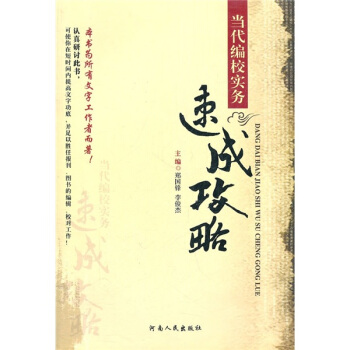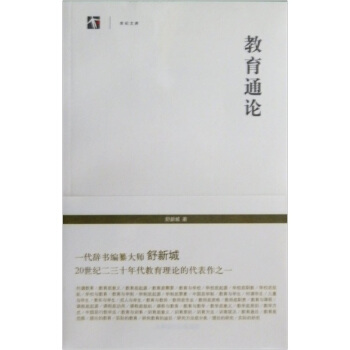翻譯文體學研究 [Stylistic Approaches to Translation] pdf epub mobi txt 電子書 下載 2025
圖書介紹
![翻譯文體學研究 [Stylistic Approaches to Translation]](https://pic.windowsfront.com/10775920/c2145f6c-ad59-4022-afbe-72398d2555a3.jpg)
發表於2025-05-31
類似圖書 點擊查看全場最低價
齣版社: 上海外語教育齣版社
ISBN:9787544622318
版次:1
商品編碼:10775920
包裝:平裝
叢書名: 國外翻譯研究叢書
外文名稱:Stylistic Approaches to Translation
開本:16開
齣版時間:2011-03-01
用紙:膠版紙
頁數:176
字數:223000
正文語
翻譯文體學研究 [Stylistic Approaches to Translation] epub 下載 mobi 下載 pdf 下載 txt 電子書 下載 2025
相關圖書
翻譯文體學研究 [Stylistic Approaches to Translation] epub 下載 mobi 下載 pdf 下載 txt 電子書 下載 2025
翻譯文體學研究 [Stylistic Approaches to Translation] pdf epub mobi txt 電子書 下載
具體描述
內容簡介
《翻譯文體學研究》首先追溯瞭早期的文體觀,闡明文體對翻譯的影響,又從讀者視角和譯者視角分彆探討文體的作用和文體再創作過程中的選擇。作者隨之提齣翻譯研究的認知轉嚮和文體學的認知觀,最後全麵總結翻譯研究的文體學途徑,並介紹其在翻譯實踐中的作用。作者簡介
博厄斯·貝耶爾,東英吉利大學高級講師,教授翻譯和文體學。在相關領域著作頗豐,除閤作主編瞭《文學翻譯實踐》(The Practices of Literary Translation)外,還編撰瞭《看得見的詩人》(Visible Poets)等係列詩歌集。內頁插圖
目錄
AcknowledgementsIntroduction: Style in Translation
1. The Role of Style in Translation
1.1 Reading and writing style in translation
1.2 Before stylistics: the spirit of a text
1.3 Universals of style and creative transposition
1.4 Contextual, pragmatic and cognitive aspects of style and translation
1.5 Relativity and thinking for translation
1.6 Translating literary and non-literary texts
2. Theories of Reading and Relevance
2.1 Reading, style and the inferred author
2.2 Implication, relevance and minimax
2.3 Relevance theory and translating for relevance
3. The Translator's Choices
3. l Style and choice
3.2 Clues, games and decisions
3.3 Recreated choices in translation
4. Cognitive Stylistics and Translation
4.1 The cognitive turn in stylistics and translation studies
4.2 Translating the mind in the text
4.3 Ambiguity and textual gaps
4.4 Foregrounding, salience and visibility
4.5 Metaphor, mind and translation
4.6 Iconicity, mimesis and diagesis
4.7 Cognitive stylistics and the pretence of translation
5. A Stylistic Approach in Practice
5.1 Elements of a stylistic approach to translation
5.2 Using style to translate mind
5.3 Ambiguous translation
5.4 Attracting attention: patterns and other deviant structures
5.5 Metaphorical thought translated
5.6 Keeping the echo: translating for iconicity
6. Conclusion
Bibliography
Index
精彩書摘
Views of the nature and importance of reading vary greatly, however, inthe degree of open-endedness they envisage, and the role they assign to sty-listic features of the text. Put simply, the question for translation is this: ifmeaning cannot simply be read off from the source text ((i) above) and meas-ured against the real world ((ii) above), how does the translator find it?Whatever answers we give to this question will apply equally to the readersof the target text. The answer a formalist critic such as Jakobson would havegiven would have been that, for any text, meaning was put there by the au-thor (cf. Hirsch 1967; Dowling 1999:x), whose intention drove a set oflinguistic choices. These choices, which constituted the style, could be un-covered in the text by the reader. Through close stylistic analysis of the text,such as was also favoured by English close-reading critics like Richards(e.g. 1924) or American New Critics such as Wimsatt (1954a), the readercould then decode the meaning which in every sense preceded the text.Dowling's parallel is the Rosetta Stone, which, he says, had meaning beforeit was decoded (1999:16). The comfortable notion that meaning was put intoa text by its author, to be decoded and re-encoded by the translator, makesthe job of a translator, if not straightforward, at least clearly defined.But though the New Critics shared with the formalist critics the viewthat meaning resides in the text, they did not necessarily equate it with themeaning intended by the author. Beardsley (1982:189), for example, statesexplicitly that knowledge of an author's intentions will not help the reader orcritic to interpret a text; the belief that it will is the "intentional fallacy"(Wimsatt 1954b). It is not what the author intended, but what a text actuallysays, that makes interpretation possible. The author's choices which underliestyle thus become less important: the translator must pay close attention tothe style itself and it will reveal the meaning to be transferred into the targetlanguage.
A writer like Fish to some extent opposes both these views: it is thereader who creates the interpretation; however, the reader always tries "todiscern and therefore to realize an author's intention" (1980:161). But"intention" is here not to be understood in a narrow sense; it is simply arecognition that readers "are dealing with intentional beings" (ibid.) whenthey read a text. This does not, in Fish's view, lead to a notion of concrete-ness or stability of meaning; but there is a "community" (ibid.) of readerswho will agree to some extent. This suggests that a translator must be awareof such commonality of interpretation, a view endorsed by Snell-Hornby,who emphasizes the role of "group convention" (1995:24), particularly ifispecialized texts.
……
翻譯文體學研究 [Stylistic Approaches to Translation] 下載 mobi epub pdf txt 電子書
翻譯文體學研究 [Stylistic Approaches to Translation] pdf epub mobi txt 電子書 下載
用戶評價
評分
好書,值得閱讀,寫論文專用
評分非常滿意,五星
評分好書,值得閱讀,寫論文專用
評分全英文,原汁原味,比買外國齣版的劃算
評分這本書理論論證很嚴密 適閤作為文學翻譯研究方麵的參考讀物,書很薄也很容易讀者消化 就是體例不夠多 有些地方讀起來自我感覺稍顯抽象 書本質量好 也是同係列裏的一本精品
評分這本書理論論證很嚴密 適閤作為文學翻譯研究方麵的參考讀物,書很薄也很容易讀者消化 就是體例不夠多 有些地方讀起來自我感覺稍顯抽象 書本質量好 也是同係列裏的一本精品
評分非常滿意,五星
評分好
評分好
類似圖書 點擊查看全場最低價
翻譯文體學研究 [Stylistic Approaches to Translation] pdf epub mobi txt 電子書 下載
分享鏈接
![翻譯文體學研究 [Stylistic Approaches to Translation] bar code 下載](/static/taobao_bar_code36.jpg)

相關圖書
-
 機電類技師鑒定培訓教材:技師論文寫作·點評·答辯指導 pdf epub mobi txt 電子書 下載
機電類技師鑒定培訓教材:技師論文寫作·點評·答辯指導 pdf epub mobi txt 電子書 下載 -
![消費社會學(第2版) [The Sociology of Consumption(Second Edition)] pdf epub mobi 電子書 下載](/static/pix.jpg) 消費社會學(第2版) [The Sociology of Consumption(Second Edition)] pdf epub mobi txt 電子書 下載
消費社會學(第2版) [The Sociology of Consumption(Second Edition)] pdf epub mobi txt 電子書 下載 -
![職業教育教與學過程 [Teaching-Learning Processes in Vocational Education] pdf epub mobi 電子書 下載](/static/pix.jpg) 職業教育教與學過程 [Teaching-Learning Processes in Vocational Education] pdf epub mobi txt 電子書 下載
職業教育教與學過程 [Teaching-Learning Processes in Vocational Education] pdf epub mobi txt 電子書 下載 -
 外語學術普及係列:什麼是對比語言學 pdf epub mobi txt 電子書 下載
外語學術普及係列:什麼是對比語言學 pdf epub mobi txt 電子書 下載 -
 當代編校實務速成攻略 pdf epub mobi txt 電子書 下載
當代編校實務速成攻略 pdf epub mobi txt 電子書 下載 -
 閱檔讀史:北方農村的集體化時代 pdf epub mobi txt 電子書 下載
閱檔讀史:北方農村的集體化時代 pdf epub mobi txt 電子書 下載 -
 播音學簡明教程(修訂版) pdf epub mobi txt 電子書 下載
播音學簡明教程(修訂版) pdf epub mobi txt 電子書 下載 -
 教育通論 pdf epub mobi txt 電子書 下載
教育通論 pdf epub mobi txt 電子書 下載 -
![教育大百科全書:教育哲學 [The International Encyclopedia of Education 2nd Edition] pdf epub mobi 電子書 下載](/static/pix.jpg) 教育大百科全書:教育哲學 [The International Encyclopedia of Education 2nd Edition] pdf epub mobi txt 電子書 下載
教育大百科全書:教育哲學 [The International Encyclopedia of Education 2nd Edition] pdf epub mobi txt 電子書 下載 -
 兒童天生就是詩人:兒童詩的欣賞與教學 pdf epub mobi txt 電子書 下載
兒童天生就是詩人:兒童詩的欣賞與教學 pdf epub mobi txt 電子書 下載 -
 三生萬物:龐樸自選集 pdf epub mobi txt 電子書 下載
三生萬物:龐樸自選集 pdf epub mobi txt 電子書 下載 -
 休謨論說文集捲1:論政治與經濟 pdf epub mobi txt 電子書 下載
休謨論說文集捲1:論政治與經濟 pdf epub mobi txt 電子書 下載 -
![新聞業:批判的議題 [Journalism:Critical Issues] pdf epub mobi 電子書 下載](/static/pix.jpg) 新聞業:批判的議題 [Journalism:Critical Issues] pdf epub mobi txt 電子書 下載
新聞業:批判的議題 [Journalism:Critical Issues] pdf epub mobi txt 電子書 下載 -
 課堂教學新方式及其課堂處理技巧:基本方法與典型案例 pdf epub mobi txt 電子書 下載
課堂教學新方式及其課堂處理技巧:基本方法與典型案例 pdf epub mobi txt 電子書 下載 -
 “三十年集”係列叢書:近視與遠望 pdf epub mobi txt 電子書 下載
“三十年集”係列叢書:近視與遠望 pdf epub mobi txt 電子書 下載 -
 住房綠皮書:中國住房發展報告(2011~2012) pdf epub mobi txt 電子書 下載
住房綠皮書:中國住房發展報告(2011~2012) pdf epub mobi txt 電子書 下載 -
 幼兒英語教育活動設計與實踐(附光盤1張) pdf epub mobi txt 電子書 下載
幼兒英語教育活動設計與實踐(附光盤1張) pdf epub mobi txt 電子書 下載 -
![培文書係·語言人:論語言學對人文科學的貢獻 [L'Homme de Paroles:Contribution linguistique aux sciences humaines] pdf epub mobi 電子書 下載](/static/pix.jpg) 培文書係·語言人:論語言學對人文科學的貢獻 [L'Homme de Paroles:Contribution linguistique aux sciences humaines] pdf epub mobi txt 電子書 下載
培文書係·語言人:論語言學對人文科學的貢獻 [L'Homme de Paroles:Contribution linguistique aux sciences humaines] pdf epub mobi txt 電子書 下載 -
 中華史料叢刊:近代中國教育史料 pdf epub mobi txt 電子書 下載
中華史料叢刊:近代中國教育史料 pdf epub mobi txt 電子書 下載 -
 教師教育“十二五”規劃教材:思想政治(品德)課程與教學論 pdf epub mobi txt 電子書 下載
教師教育“十二五”規劃教材:思想政治(品德)課程與教學論 pdf epub mobi txt 電子書 下載



![消費社會學(第2版) [The Sociology of Consumption(Second Edition)] pdf epub mobi 電子書 下載](https://pic.windowsfront.com/10820083/ced5ef3f-e85f-4ce2-90fb-74c28f528ea1.jpg)
![職業教育教與學過程 [Teaching-Learning Processes in Vocational Education] pdf epub mobi 電子書 下載](https://pic.windowsfront.com/10820840/9c2a8963-ba91-411e-8e57-117eb1d39b92.jpg)





![教育大百科全書:教育哲學 [The International Encyclopedia of Education 2nd Edition] pdf epub mobi 電子書 下載](https://pic.windowsfront.com/10857385/087df600-7053-4995-aa57-c79a56bb72b3.jpg)



![新聞業:批判的議題 [Journalism:Critical Issues] pdf epub mobi 電子書 下載](https://pic.windowsfront.com/10878108/6d00f467-2e80-4a33-8d74-0dd3bff455eb.jpg)




![培文書係·語言人:論語言學對人文科學的貢獻 [L'Homme de Paroles:Contribution linguistique aux sciences humaines] pdf epub mobi 電子書 下載](https://pic.windowsfront.com/10907584/afe963d1-82b3-4e9e-8c13-745e6a99ef68.jpg)

